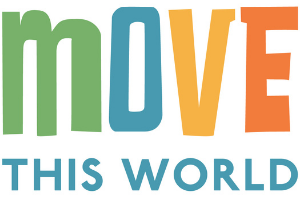Tier 1 Proactive and Preventative Mental Health Skills are processes through which children and adults acquire and apply the skills necessary to understand and manage emotions, set and achieve goals, feel and show empathy for others, establish and maintain positive relationships, and make responsible decisions. The initiatives we have selected will continue to contribute to a strong school culture in which all students feel safe, supported, and valued.
Proactive and preventative mental health programming is a process through which children and adults acquire and apply the skills necessary to understand and manage emotions, set and achieve goals, feel and show empathy for others, establish and maintain positive relationships, and make responsible decisions. The initiatives we have selected will continue to contribute to a strong school culture in which all students feel safe, supported, and valued.
At IDEA Public Schools, we use Move This World as the foundation of our proactive and preventative mental health program. Move This World uses fun and engaging videos to teach core emotional and behavioral skills, helping your child develop the confidence to express their feelings authentically, manage emotions in healthy ways, and navigate challenges successfully from Kindergarten through 12th grade.

This year, we will continue to use Move This World as our foundational proactive and preventative mental health program. Move This World uses fun and engaging videos to support students in developing essential skills such as responsible decision-making, relationship building, emotional regulation, self-awareness, and empathy. Through consistent use of this program, students are empowered to express their feelings authentically, manage emotions in healthy ways, and navigate everyday challenges with confidence.
At IDEA Public Schools, we are committed to supporting your child’s proactive and preventative mental health development each day in the classroom. Students will begin their mornings by watching and engaging with short, interactive videos designed to build essential life skills such as self-awareness, emotional regulation, empathy, relationship-building, and responsible decision-making.
Move This World provides engaging, developmentally appropriate videos that use movement, creativity, and self-expression to help students, educators, and families strengthen emotional intelligence and promote long-term wellbeing. As families, you can access and use the program at home too! Simply log in, type in the region your child attends using the log in information below, choose the curriculum for your child’s grade level, and begin exploring Move This World together.

· As the year progresses, you can expect and encourage your child to carry the skills they will learn through Move This World at home. They might begin to ask you some questions about how you’re feeling or how you manage stress (and they might even offer you some suggestions, too!)
· You’ll hear your child use Move This World vocabulary, such as: the 10 Emogers (emotional management strategies), the Emotional Building Blocks (vocabulary words focused emotions) or the Positive Pivot Scale (a framework used to respond to challenges).
· You might see your child experimenting with new ways to express themselves, setting new and ambitious goals for themselves or developing a new vocabulary around their emotions.
Additional Title: Tier 2 & Tier 3 Mental Health Supports at IDEA Public Schools
At IDEA Public Schools, we are committed to supporting the whole child through a multi-tiered system of support that addresses students’ emotional, behavioral, and mental health needs. In addition to our proactive and preventative programming through Move This World, we also offer more targeted supports based on student need.
Tier 2 – Small Group Counseling (with parent/guardian consent):
Some students benefit from additional support through small group counseling. These groups are facilitated by trained mental health professionals and focus on topics such as emotional regulation, coping skills, peer relationships, grief, and other needs identified by students, families, or school staff. Participation in Tier 2 group counseling requires parent or guardian consent.
Tier 3 – Individualized Mental Health Services (with parent/guardian consent):
For students experiencing more intensive mental health-related concerns, we offer individualized services through our licensed mental health providers on campuses. These services are confidential and tailored to each student’s unique needs, and they require active consent from a parent or guardian. Our goal is to ensure students receive the right level of care in a supportive school environment.
Parent/Guardian Referrals:
If you believe your child would benefit from additional support, we welcome you to submit a referral.
Universal Referral Link: https://www.ideasaf.com/
This form allows you to share your concerns directly with our mental health team so we can determine the best way to support your child. Upon receiving the referral, the campus mental health provider will reach out to you for additional information to discuss your child’s needs further to support them within the school environment.
Together, we can ensure every student feels safe, supported, and ready to learn.

The mood meter is a tool that we use to support our students in identifying and expressing their emotions. We believe that when students are able to identify emotions, they can then learn to manage them. In class each day (virtual or in-person), your child will have an opportunity to share with their teacher and classmates how they feel using the mood meter.
The Mood Meter consists of four colors: red, blue, green, and yellow. Each Mood Meter color represents a different set of feelings associated with the pleasantness of the emotion and the energy it has.
You can reinforce what your child is sharing at school by using the mood meter at home.